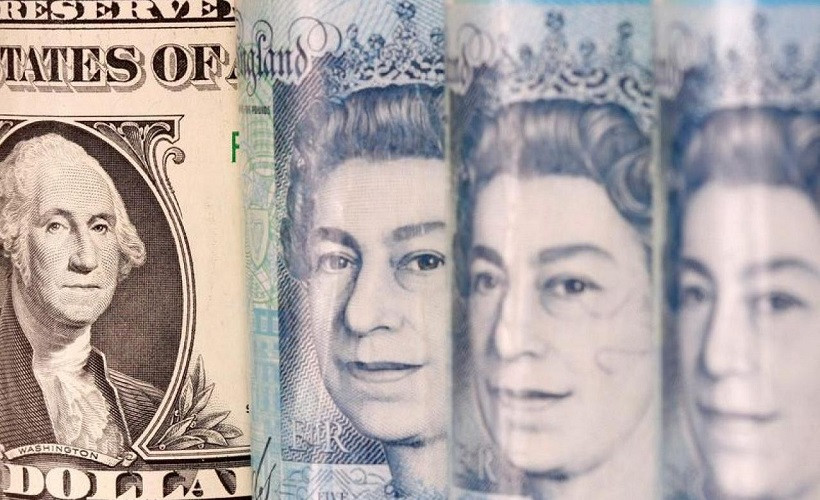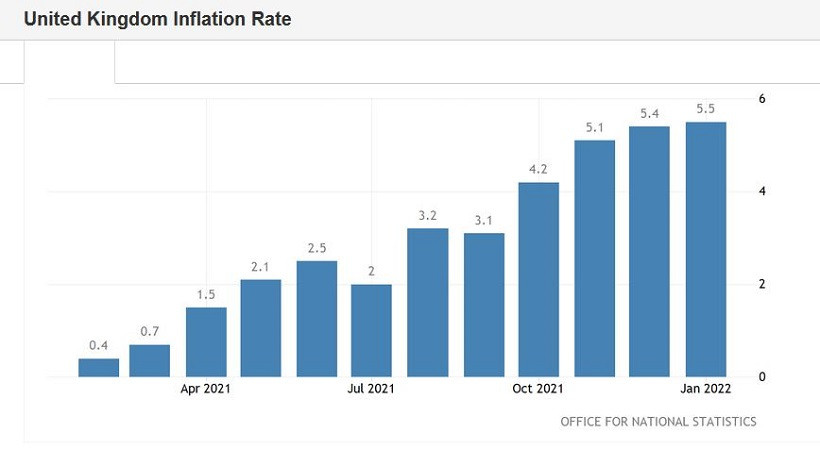
The GBP/USD pair is in high demand today, against the background of a decline in the US dollar index and a fairly strong inflation report that was published in the UK. At the same time, traders ignored the American data. Retail trade figures exceeded all expectations, but at the same time did not impress market participants. As a result, buyers of the pound/dollar pair got another opportunity to test the area of the 36th figure. This price area is a kind of impregnable "citadel". Throughout February, traders repeatedly stormed the 1.3600 mark. But as soon as the pound crossed this target, the northern impulse safely faded. The price was returning to the range of 1.3500-1.3580, waiting for the next information driver.

Today's inflation release turned out to be quite strong: all components came out in the "green zone", exceeding the forecast values. The published figures supported the pound, especially against the background of hawkish reasoning regarding the further actions of the British regulator. It should be noted here that the GBP/USD pair differs from many other dollar pairs of the "major group". Back in December, the Bank of England started tightening monetary policy, raising the rate by 15 basis points. In February, the regulator returned to this issue again, increasing it to 0.5% (and four members of the Committee proposed to raise the rate immediately to 0.75%).
Following the results of the last meeting, the British Central Bank made it clear that it intends to further tighten the parameters of monetary policy - the only question is at what pace. This issue is debatable (as in the case of the Fed), but still, the "opposition sentiment" towards the greenback in the GBP/USD pair is quite strong. The fundamental background allows buyers to "hold the line", restraining the onslaught of dollar bulls. That is why over the past two weeks (since February 2), the pair has not fallen below the 1.3500 mark, even during periods of strengthening of the greenback. On the other hand, dollar bulls do not allow GBP/USD buyers to gain a foothold above the 1.3600 mark, due to the hawkish intentions of the Federal Reserve. Sooner or later, the pendulum will swing in one direction or the other - but so far there is a clinch on the pair.
But let's return to today's macroeconomic reports. The British release surpassed the bold assumptions of experts. The overall consumer price index on an annualized basis in January came out at 5.5%, updating a multi-year high. This is the strongest growth rate since March 1992. The structure of the release suggests that compared to January 2021, for example, used cars have risen in price by almost 29%. Prices for clothing and footwear in January increased by 6% compared to the same period last year, and for food and beverages - by 4%. The last component showed the maximum growth rate since the spring of 2013. Every month, the CPI slowed to -0.1% but still came out in the "green zone", as most analysts expected to see a deeper decline (to -0.4%). Core inflation also showed strong dynamics. The core consumer price index jumped to 4.4%. The indicator has been consistently growing for the past 6 months.
In addition, the retail price index was published today (growth in annual terms to 7.8% is a long-term record), the producer price index (strong growth was recorded both monthly and annual), as well as the producer purchase price index (the indicator also reflected positive dynamics). All components of the release were released in the "green zone".
In other words, British inflation has once again surprised with its steady growth. This fact has again brought the issue of raising the rate back on the agenda. To be more precise, the subject of discussion is precisely the rate of increase and not the very fact of tightening monetary policy. According to some experts, the English regulator will raise the interest rate in March by 25 basis points, according to others - by 50 points, that is, up to 1%.
On the one hand, representatives of the Bank of England are voicing rather restrained rhetoric. In particular, Central Bank chief economist Huw Pill said last week that the regulator would apply a "balanced approach to policy decisions." He clarified that the markets should not expect that the rate hike "will be aggressive in the medium term." On the other hand, we should not forget that four (out of nine) members of the Committee voted for a 50-point rate increase at the last meeting. Therefore, it is likely that today's inflation release will strengthen the hawkish mood in the camp of the British regulator.

The US currency, in turn, is under background pressure: the US dollar index is gradually declining for the second day in a row. This is partly due to a decrease in anti-risk sentiment. Today it became known that the Russian troops of the Southern Military District left the Crimea after the completion of exercises at the training grounds. In addition, the Russian Defense Ministry reported yesterday that the units of the Western and Southern military districts are preparing to return to the garrisons after the Russian-Belarusian exercises. The relevant newspaper headlines somewhat reassured market participants. And the invasion of the Russian Federation into the territory of Ukraine, "appointed" by the American media, did not take place - this fact also reduced the overall degree of intensity.
In addition, dollar bulls are disappointed by the rhetoric of some representatives of the Fed, who doubted that monetary policy should be tightened at an aggressive pace (i.e., raise the base rate by 100 points before the beginning of July).
Thus, the GBP/USD pair retains the potential to re-storm the 36th figure. The "ceiling" of the northern impulse at the moment is 1.3640, which corresponds to the upper line of the Bollinger Bands indicator on the D1 timeframe. Caution should be exercised in this price area - it is here that the northern impulse gradually fades away most often. If buyers fail to break through this resistance level, from this target, sales can be considered with a target of 1.3520 (the upper limit of the Kumo cloud coinciding with the average line of the Bollinger Bands indicator on the daily chart).